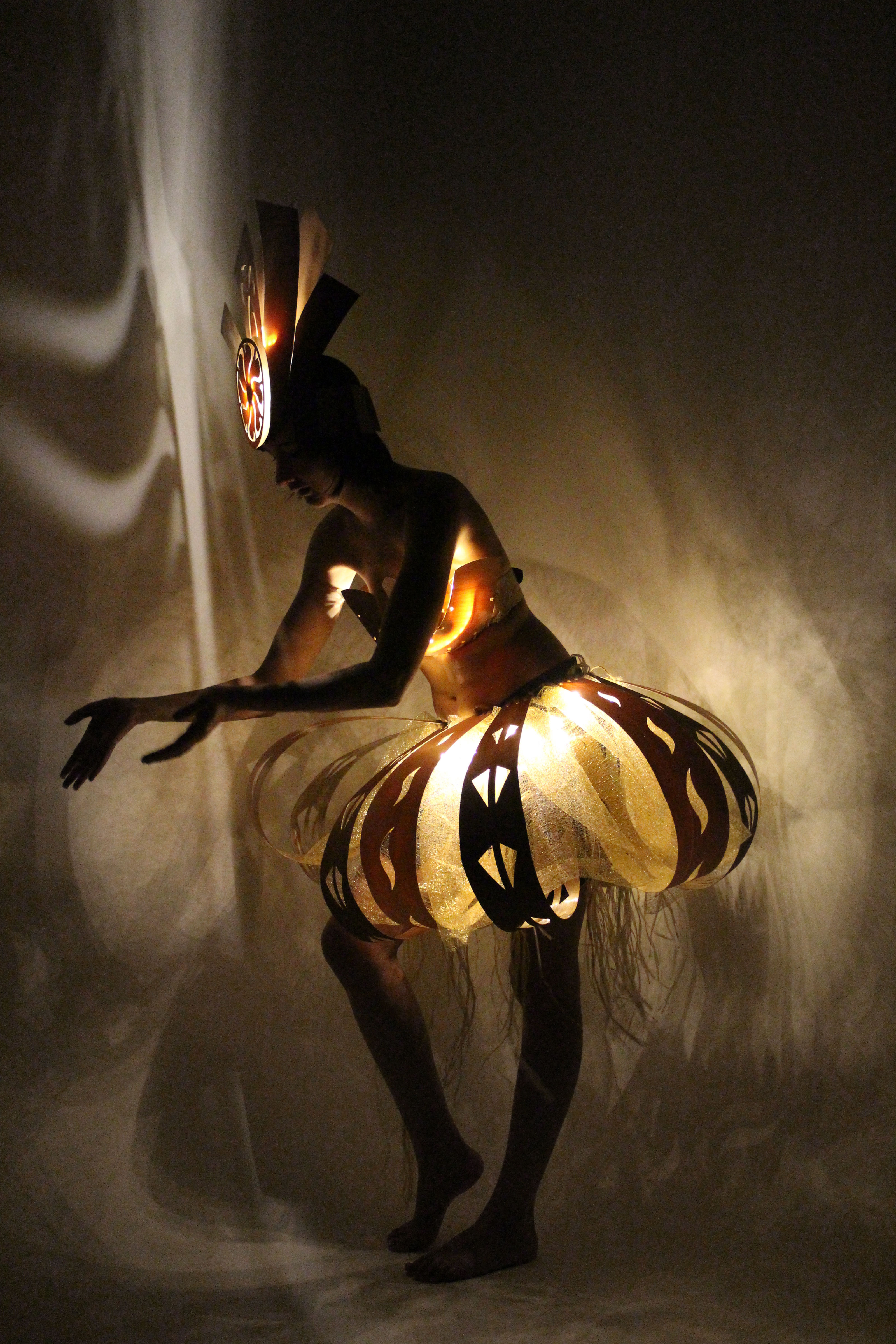
Anne Niemetz, a senior lecturer in Victoria’s Media Design programme, had her garment ‘Starship Pirouette’ selected for the Children’s section, where designers were challenged to re-interpret the ballet tutu.

‘Ura rā, modelled by Rachel Hockin. Credit: Jodi Meadows.
‘Ura rā’, a garment inspired by the Cook Island dance costume and created by Rachel Hockin, a Master of Design Innovation student, was selected for the South Pacific section.
Both are first-time entrants of WOW. “I thought it was high time as a teacher of wearable technology to enter the competition,” says Niemetz.
Starship Pirouette was inspired by UFOs and features lights on the top, side and bottom of the garment.
“The speed of the light movement on the side is influenced by an accelerometer and there is a light ring at the bottom which slowly pulses,” says Niemetz.
“The initial concept had two antennas but when I refined the design, I thought it was too insectoid. One of my Master’s students recommended having one antenna because it’s more alien-like and absurd.”
Born and raised in Rarotonga, Hockin says she was inspired to design her wearable technology garment during a course taught by Niemetz last year. “I learned the technical skills with Anne, and then did an independent study over summer where I developed ‘Ura rā’.”
Translated as ‘sun dance’, each element of ‘Ura rā’ has a different meaning and was crafted by hand. The skirt represents the sea, the hat signifies the sky and the bra, the land. They all light up to represent the Gods of the Cook Islands.
To make the skirt, Hockin folded two types of veneer (very thin wood) into loops around the hips, referencing the titi (belt around the hips) from the Cook Island dance costume.
“The titi is the biggest part of the costume and emphasises the movement of the hips. The symbols are of waves and spearheads, meaning strength and power. This is the ‘wow’ factor of the costume,” she says.
In the head piece, LED lights sit behind strips of veneer which have stencilled patterns symbolising the sky. Much like the headpiece, veneer is stitched onto the bra and lights shine through hand-cut patterns. The main symbol used is the moko (gecko), which is ‘The Guardian of the Land’. There is also a tiare (flower symbol), which stands for femininity and unity.
“Doing this project took me back to growing up in Rarotonga. To see it on stage at WOW was an amazing feeling,” says Hockin.
Anne Niemetz says she was impressed by the level of thought Hockin has put into each detail of her garment.
“I am really pleased with how successful the wearable technology stream has been developing at Victoria University and hope more students will continue to perform well at the World of Wearable Art, as well as other competitions.”
School of Design graduates Fenella Fenton and Dylan Mulder also made the finals of WOW, going on to win Awards for their entries.
Industrial Design graduate Fenella Fenton won the American Express Open section for her garment, ‘Mantilla’, along with New Zealand designer Jeff Thomson. Dylan Mulder, also an Industrial Design graduate, won the New Zealand Design Award for his garment ‘Samurai Silent Dragon’.
